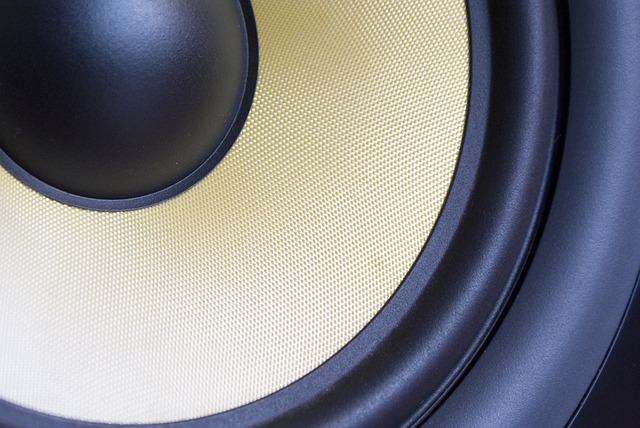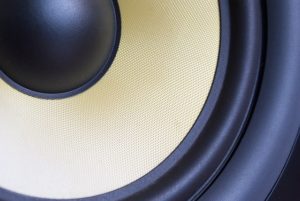
5 Key Features to Look for in Studio Monitors

If you’re one of the thousands of bedroom producers out there, then chances are you’ve got yourself quite the setup.
Depending on your chosen genre of production, you may have a microphone, an instrument or two, and a powerful computer with a quality DAW to run everything from.
But, no home studio setup is complete without studio monitors. Since the signal played from these speakers is “balanced” (not bass-heavy, treble-focused etc.), they’re an invaluable tool for those who are looking to finetune their mix to professional standards.
It can be difficult, though, to know which studio monitors to purchase. As with any other type of electronic, there are enough brands and price points to overwhelm you with potential decisions.
Luckily, there are certain features you can look for in this type of speaker to get the best quality for your money.
Not sure where to start? Don’t worry, we got you covered.
Let’s take a look at everything you need to know.
1. Size
This is the attribute most people tend to focus on first. But, bigger is not always better.
The ideal studio monitor size for you will depend on the environment you’re using them in. As you may guess, smaller speakers are better for smaller rooms, while larger speakers are better at handling more expansive spaces.
If you set up smaller studio monitors in a large room, you won’t get the accurate sound that you’re looking for, and you may find that the signal feels loose or weak.
Large speakers in a small room will overwhelm the space, making it difficult to hear finer, more subtle details in the music. This, of course, will lead to a muddier mix than you’d like.
In general, 5″ monitors are the perfect size for bedrooms and other similar living spaces. Any larger than this and you may disturb those around you.
2. Active or Passive?
This isn’t one of the most common dilemmas people face, but it’s still out there.
To keep things simple, passive monitors need an external amplifier to strengthen the signal before it runs through the monitor itself.
Active monitors have already everything they need, and it’s built into the speaker cabinet.
In terms of sound quality, they’re very similar at similar price points. Many studio monitors today are active, though, and far more people use them because of the added convenience.
If you’re one of those people who love old-school gear, then passive monitors may be a good choice for you. Otherwise, active monitors are a safe bet.
3. The Low End
If you plan on picking up a pair of studio monitors and making your walls rumble with dark, crunching bass…
You’re out of luck.
Most studio monitors (except higher-end ones) won’t have the deep, rumbling bass that’s been popular since the inception of music production. So, you’ll need to pick up a subwoofer if you’re looking to fill your room with low end.
But, be wary — this comes with other responsibilities. You’ll need bass traps and other forms of acoustic treatment for your room if you want to have an accurate reference of the bass sound.
So, if you’re just looking for studio monitors for general mixing, they don’t need to have crazy low end. Instead, you can mix everything on your studio monitors and then use a pair of quality reference headphones to mix your bass.
If your studio monitors are all you have to mix with, reasonably-priced monitors will provide a low enough frequency range to mix properly.
4. Price
The cost of the monitors is just as important as the other attributes.
For one, the cost determines whether or not the speakers you’re interested in fall within your budget.
Second (and this goes for most electronics), spending more money doesn’t always get you a better quality product for your situation.
As previously mentioned, larger speakers aren’t ideal for smaller spaces. And, the most expensive monitors are usually the biggest.
By browsing different brands, you’ll be able to get a feel for what type of speaker is priced the most fairly for its specifications.
For example, you don’t want to drop hundreds of dollars on sleek-looking speakers that have virtually zero low end to them.
As a general rule of thumb, you’ll get what you pay for. But, do your best to not overpay.
5. Near-Field or Far-Field?
This is another one of those uncommon quandaries buyers may find themselves in. But, there are people out there who need this question answered.
As you can assume, near-field speakers are meant to be played over shorter distances. This greatly reduces the amount of impact the room’s acoustics have on the sound.
Far-field speakers are conversely meant to be played over longer distances. These intentionally take the room into account when mixing, which will allow you to hear the sound in a more realistic setting as opposed to directly out of the speakers.
As for which you should get? It depends on your goal (and your total space).
If you have a large room and want to get the most accurate mix possible, far-field speakers are the way to go.
Otherwise, near-field speakers are the most logical and convenient choice.
Choosing The Right Studio Monitors Can Seem Difficult
But it doesn’t have to be.
With the above information in mind, you’ll be well on your way to finding a pair of studio monitors that can help you reach a tighter mix and better overall production.
Want to learn more about audio equipment that can help you develop a better ear for music? Make sure to check out the rest of our blog!
